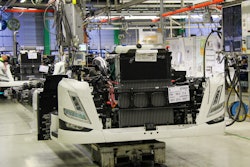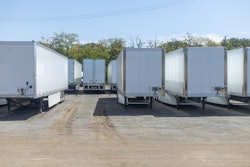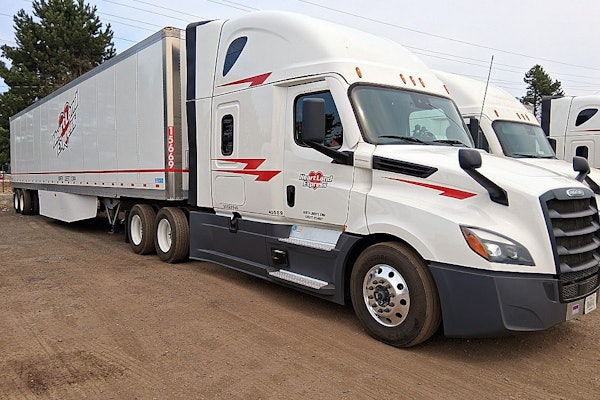
Economist Robert Fry had to put the disclaimer up front.
“First the legal stuff,” Fry said Tuesday, pointing to his opening slide before presenting a U.S. macroeconomic forecast during NTEA’s Work Truck Show in Indianapolis. “This basically says economic forecasts are sometimes wrong — especially when you submit a forecast on Friday and someone enacts tariffs on a Tuesday.”
Fry said he came to Indianapolis with a detailed, researched presentation on current economic conditions and a forecast for below average but still positive economic growth.
But hours before he stepped on stage, President Trump’s tariffs on goods from Canada and Mexico hit. The stock market continued its roller coaster ride from Monday, and Fry was suddenly standing in front of audience with slides that no longer matched the market of the day.
“Cut us a break. It’s hard right now,” he said.
S&P Global Mobility’s Andrej Divis couldn’t help but say the same. A longtime presenter at Work Truck Show, Divis said it seems like every time he’s about to step on stage in Indy a large global crisis precedes him, throwing a wrench into S&P’s baseline forecasts developed in February in preparation for the show.
[RELATED: See what TPS readers think of President Trump's tariff plans]
“It’s never easy to be here,” he joked. “Every four years there’s been a new administration, and even in the off years other things happen, like invasions, the pandemic and now tariffs. There’s always a big challenge.”
But the news of the day couldn’t stop the duo from presenting, and both did their best to frame their pre-tariff forecasts as such, noting how much the economy deviates from its through February trajectory will ultimately depend on how long the tariffs last.
Like he did in February, Fry and Divis acknowledged President Trump could rescind his tariffs as quickly as he introduced them, using the negotiations they spurred to claim a win in his fight for improved border security. Tariffs lasting a week or two would be unquestionably challenging but likely not recessionary if permanently sidelined. Beyond that, the duo said the trucking and automotive industry could be in for a tough stretch.
“As of last week I thought President Trump would extract something from these negotiations, trumpet it as a major victory and rescind the tariffs,” Fry said. “If the tariffs stay in place for more than a few weeks, I will be revising my forecasts and putting in a recession.”
Divis was in agreement. He said S&P’s baseline forecast produced in February included a rise in registrations for Class 4-8 vehicles of nearly 9% in 2025 and 2026, driven steadily by replacement demand, solid market fundamentals and a possible pre-buy (mostly in the heavy-duty sector) to acquire new equipment ahead of EPA 2027 regulations. He said those numbers will not be achievable if the tariffs on Mexico and Canada and soon to be implemented steel and aluminum tariffs are in place for any extended period.
U.S. GDP has posted consistently solid quarterly growth rates of 2 to 4% over the last few years, Fry said, driven by strong employment and consumer spending and an economy that, for multiple reasons, may no longer be as sensitive to inflationary pressure as it had been prior. He said before President Trump’s tariffs it was looking like the Federal Reserve might actually achieve the soft landing it’s been shooting for since inflation spiked in late 2021.
“The economy has continued to grow; or was growing through February,” he said.
[RELATED: MEMA polling shows vendors struggling with tariff uncertainty]
Growth for March and beyond is now much harder to predict. Fry said Trump’s focus on deregulation on its own could be useful but the tariffs go beyond that objective.
“I don’t get these tariffs on Canada and Mexico,” he said. “You would think a real estate developer would know you don’t increase the value on your property by throwing stones through your neighbor’s windows and I think that’s what these [tariffs] are.”
Divis refrained from commenting on the president’s aims but agreed with Fry on the negative potential from the tariffs. He said S&P’s early tariff research indicates an extended tariff timeline will drive up new Class 8 truck prices by at least 10% while pushing demand down by 17%, flipping S&P’s commercial vehicle forecast from up 9% to down nearly the same amount.
“Now that we have them, how long are they going to last?” Divis said. “That’s really going to be the most important question for our industry.”














